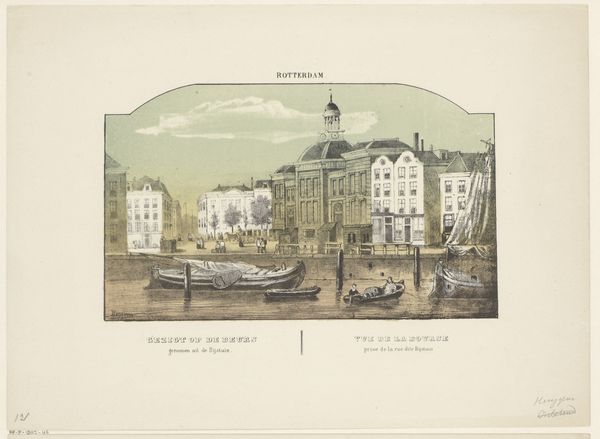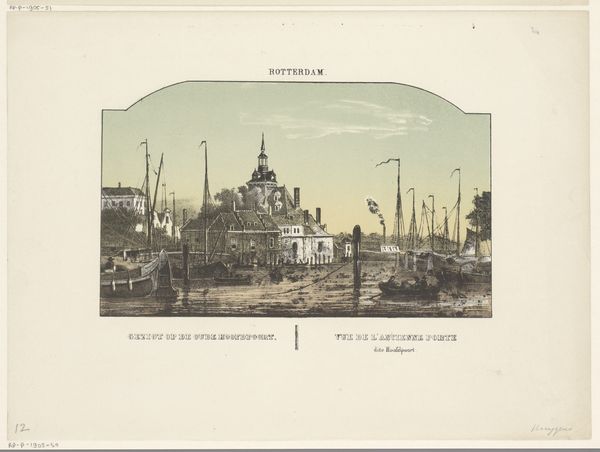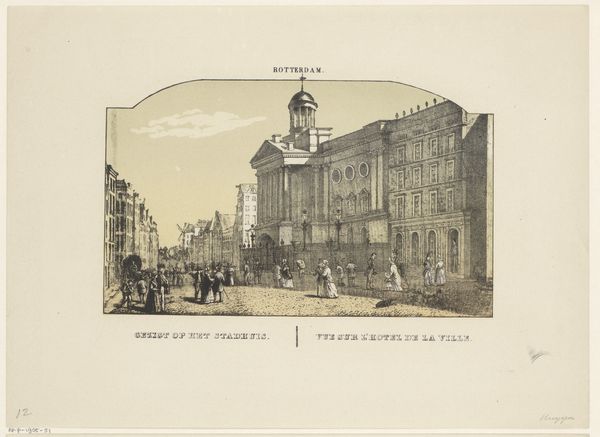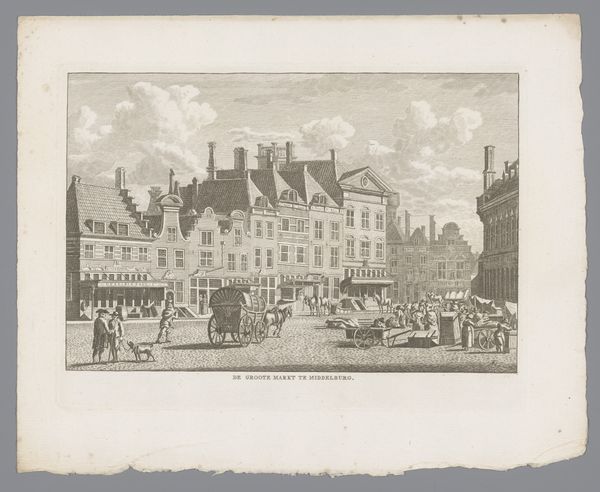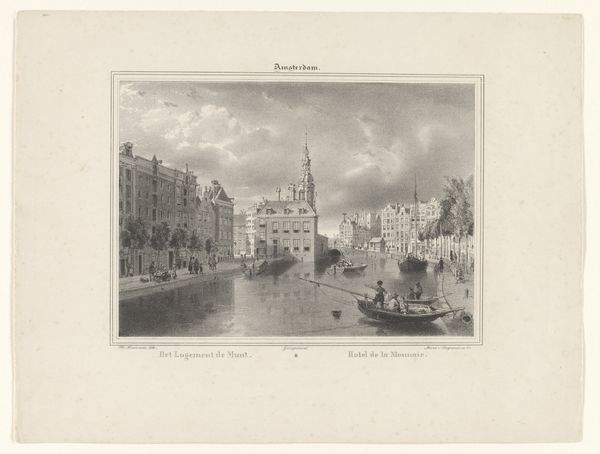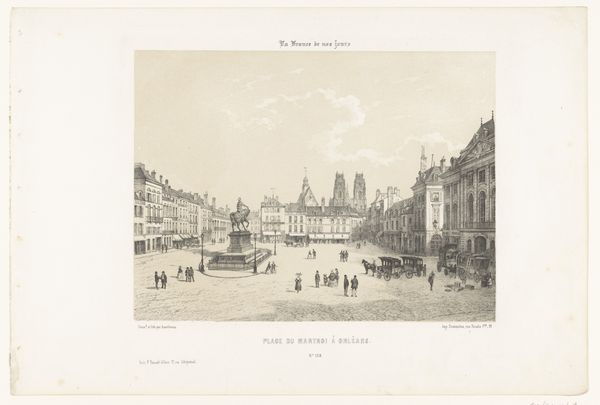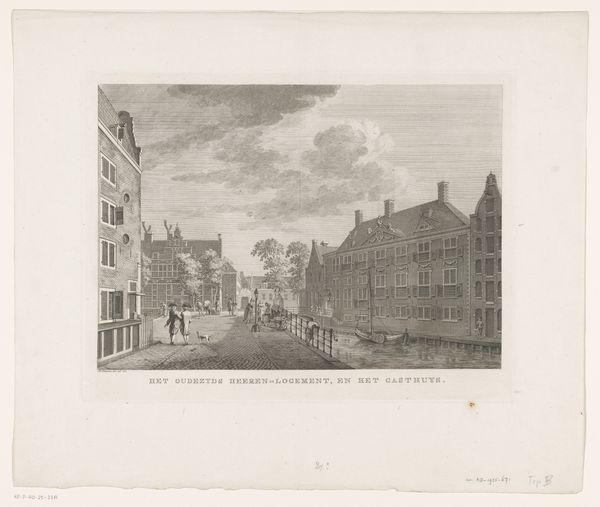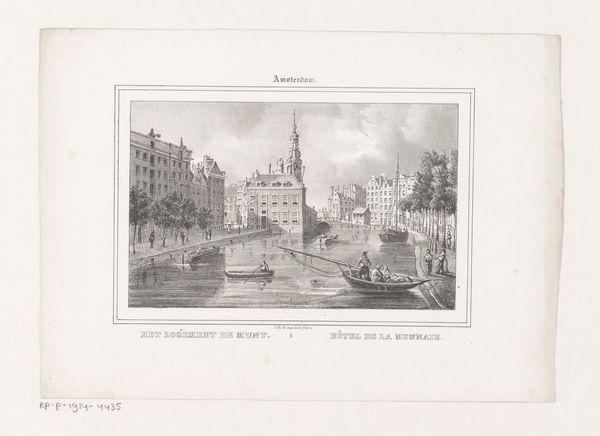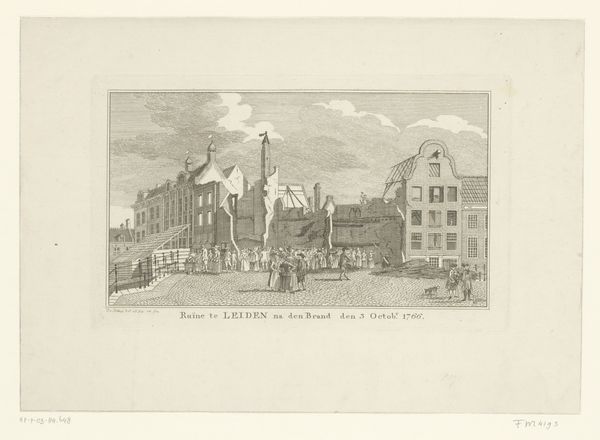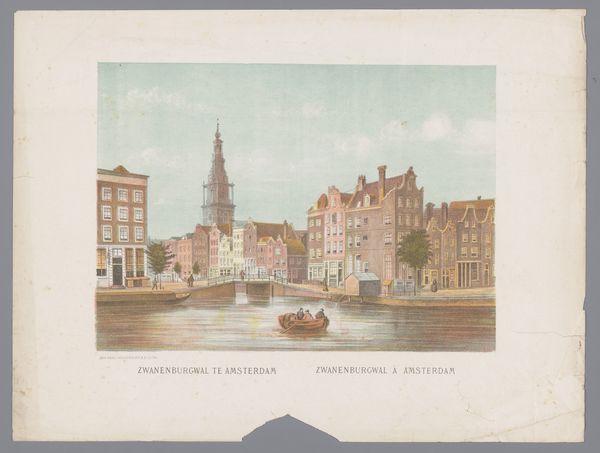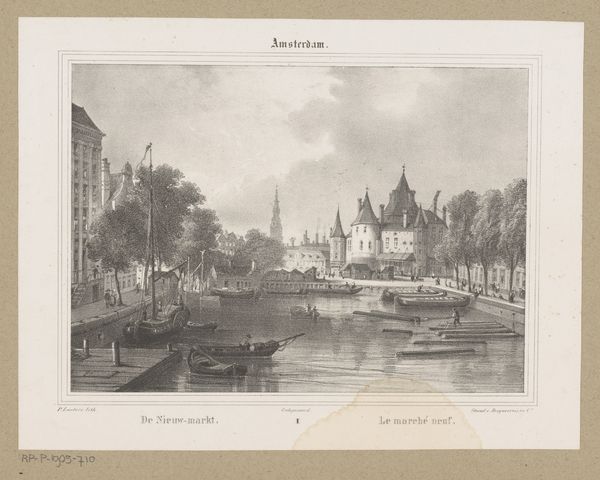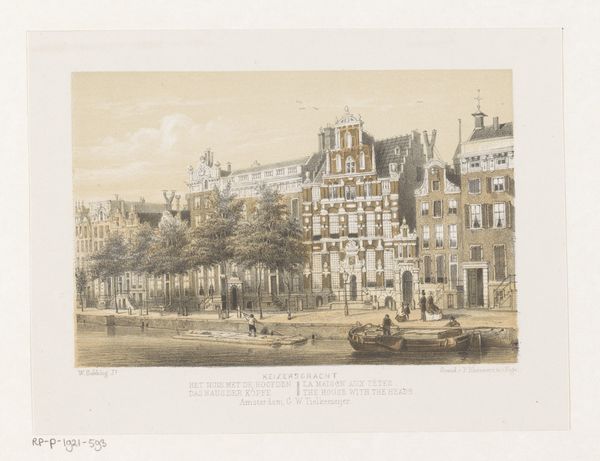
print, engraving
# print
#
old engraving style
#
romanticism
#
cityscape
#
genre-painting
#
engraving
Dimensions: height 280 mm, width 377 mm
Copyright: Rijks Museum: Open Domain
Curator: Looking at this detailed print entitled "Grote markt in Rotterdam," likely made sometime between 1812 and 1887 by Frederik Lodewijk Huygens, the sheer amount of cross-hatching suggests an extraordinary investment of time. Editor: The scene evokes a kind of bustling stasis. There's a stillness achieved by the graphic means that somewhat mutes the suggested commotion of the market activity. Curator: Indeed, notice how the engraving technique lends itself to depicting texture; you can almost feel the roughness of the stone in the buildings contrasted with the smoother areas indicating textiles and human figures. The light plays delicately across the scene thanks to subtle tonal shifts. Editor: What strikes me, however, is the almost relentless repetition of lines creating these visual textures; the very labour of the piece seems so present in it. Given the artist's means, how many hours were invested in simply describing the architecture alone, each brick, each window. What of the local economy supported by that industry of image production? Curator: Certainly, a key point, but don't let the materiality completely eclipse the clever perspectival arrangement. Our eye is skillfully guided into the urban depth by receding lines, leading the gaze through the human theatre towards the building facades, a composition masterfully contained within its rectangular format. Editor: Fair, though perhaps, for me, what signifies most are those blurred boundaries, the permeable edges between production, representation, and daily life. These people in the marketplace are rendered products themselves of some other commerce even as they inhabit and shape the place where this very engraving seeks its consumers, its place within a network of value exchange. Curator: A compelling observation. Ultimately, I'm left contemplating how an ostensibly objective urban landscape becomes a subjective encounter through careful graphic artistry. Editor: For me, it raises a larger question of unseen labour, reminding us that seemingly straightforward artworks may have complex, unacknowledged histories behind their making.
Comments
No comments
Be the first to comment and join the conversation on the ultimate creative platform.
